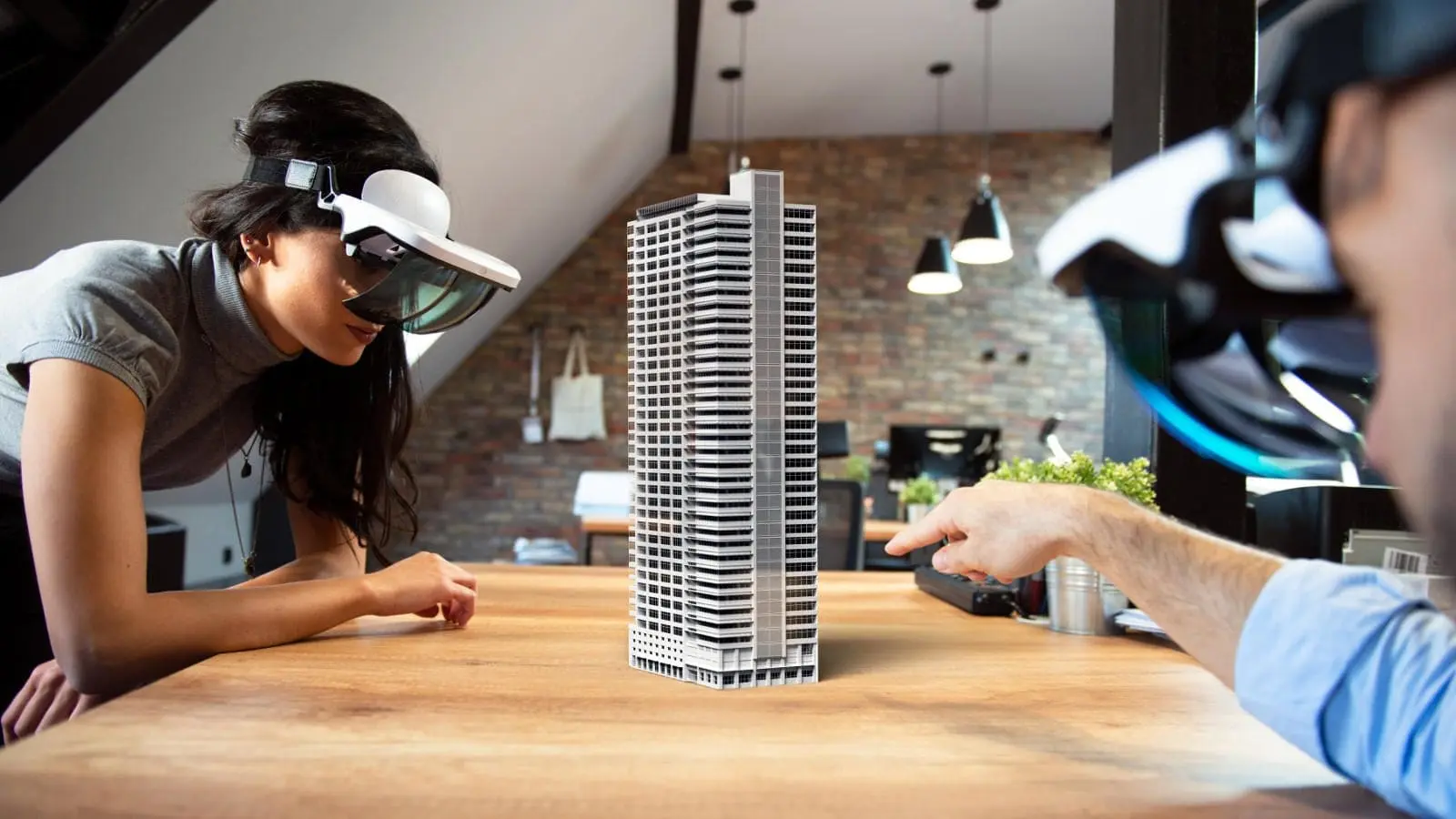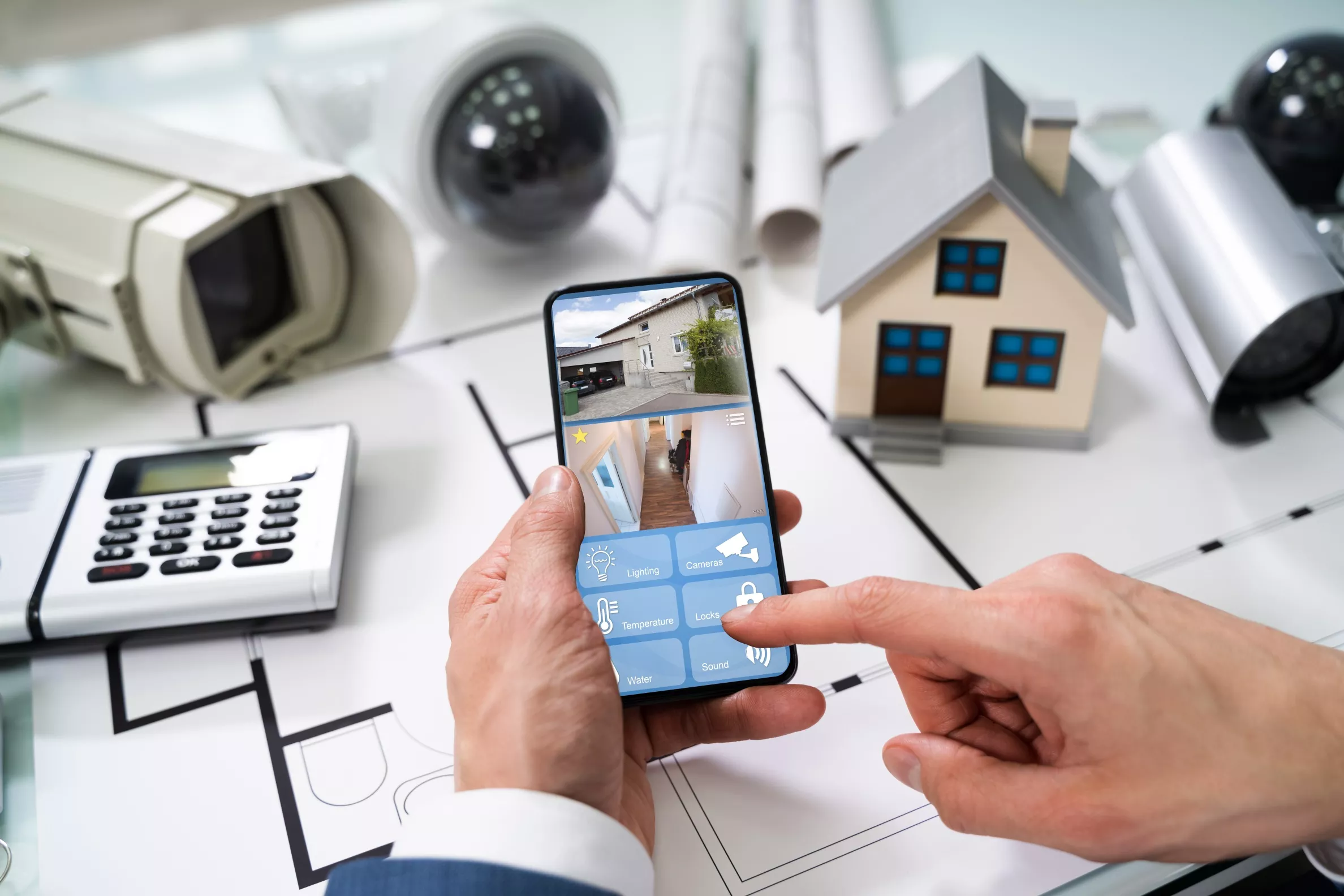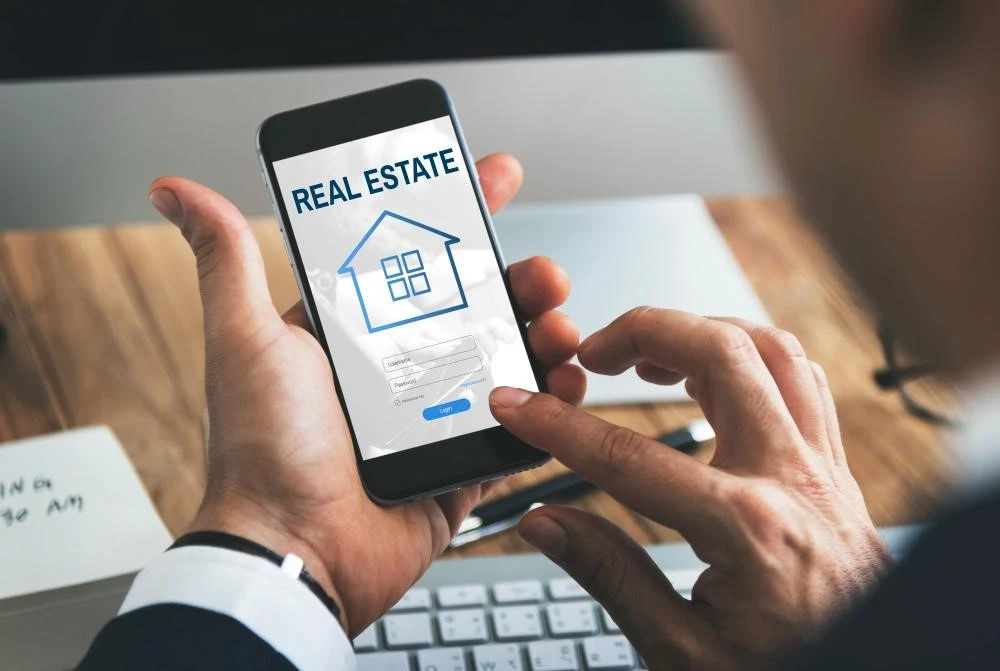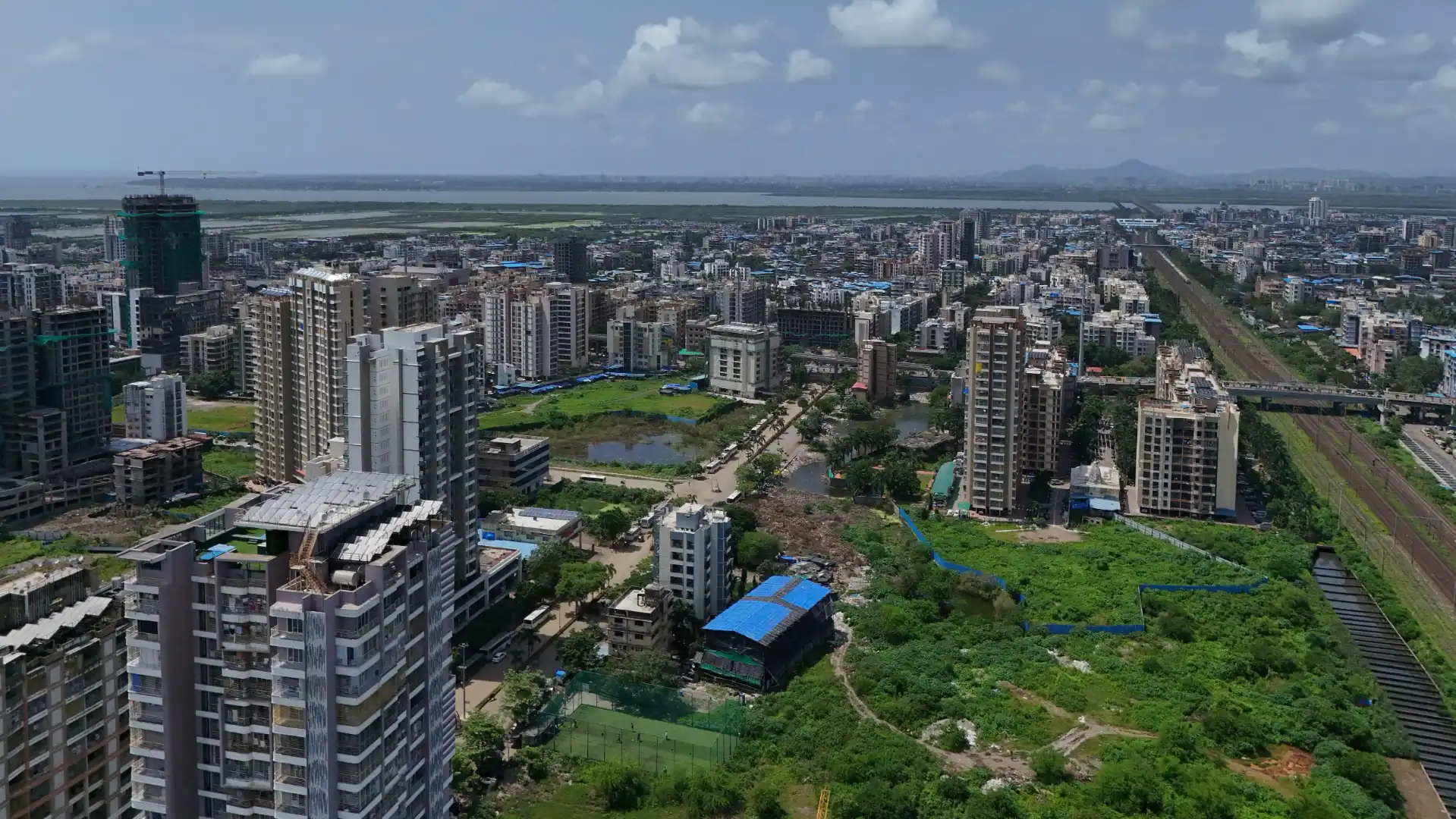Table of Content
- How VR is Transforming the Real Estate Industry
- Why Virtual Reality Works in Real Estate
- Key Benefits of Virtual Reality in Real Estate
- Applications for Virtual Real estate
- Implementation Considerations
- VR vs. Traditional Real Estate Marketing
- Key Features and Technical Advantages
- Measuring ROI and Key Metrics
- Future Proofing Real Estate with VR
- Best Practices for Adoption
- Conclusion
Visualization has always played a critical role in real estate. For decades, property buyers had to rely on 2D floor plans, photographs, brochures, or sample flats to imagine how a property might look or feel. However, these methods were often limited, leaving buyers with gaps in understanding about space, scale, and design.
Today, with rapid digital innovation, the landscape has transformed. Virtual reality in real estate has emerged as a powerful tool that offers immersive, three dimensional property tours that replicate an on-site visit with remarkable accuracy. Buyers can now explore properties virtually, whether completed or under construction, from anywhere in the world. This technology is not just a convenience, it is redefining real estate marketing, sales processes, and customer engagement.
How VR is Transforming the Real Estate Industry
The impact of virtual reality in real estate is profound and wide-reaching. It bridges the gap between imagination and reality by presenting properties in a highly interactive and engaging way.
Here are some ways VR is transforming the industry:
- Immersive Walkthroughs: Buyers can “walk through” homes virtually, experiencing room proportions, lighting, and layouts as if they were physically present.
- Remote Property Viewing: Global investors, NRIs, or local buyers with limited time can explore properties without traveling.
- Pre Construction Visualization: Developers can market upcoming projects effectively, showing buyers realistic simulations long before completion.
- Virtual Staging: Properties can be furnished virtually, giving buyers a better sense of how interiors might look with different designs.
- Buyer Insights: Agents and developers can collect data on buyer engagement during VR tours, helping them refine marketing strategies and improve conversions.
This combination of technology and accessibility is creating a real estate ecosystem that is faster, more transparent, and far more engaging.
Also Read: A guide to AC servicing and maintenance
Why Virtual Reality Works in Real Estate

The success of VR in property marketing lies in its ability to replicate reality and extend convenience. Traditional tools like images and brochures fail to communicate the true essence of a space.
With VR, however, buyers gain:
- Spatial Awareness: They can understand the flow of rooms, ceiling heights, and window placements.
- Emotional Engagement: A sense of presence creates stronger emotional connections with the property.
- Time Efficiency: Multiple properties can be toured in a short time, saving hours of travel and scheduling.
- Customization Options: Buyers can change finishes, furniture layouts, or lighting instantly, helping them envision the property with their personal touch.
These elements not only improve buyer confidence but also shorten the decision-making cycle, leading to higher sales conversions.
Key Benefits of Virtual Reality in Real Estate
The benefits of virtual reality in real estate are significant for every stakeholder, buyers, sellers, and developers.
For Buyers:
- Ability to tour properties anytime, anywhere.
- Reduced need for travel, making the process cost effective.
- Better understanding of property design and scale compared to 2D plans.
For Agents and Brokers:
- Reduced costs with scalable virtual staging instead of physical furniture.
- Higher-quality leads, as VR tours attract serious, engaged buyers.
- Competitive advantage in a market where digital-first strategies matter.
For Developers:
- Faster sales cycles through architectural visualization of under-construction projects.
- Global reach, attracting investors from different geographies.
- Showcase of entire projects, including future amenities and landscaping.
In short, VR enables the real estate industry to operate more efficiently, effectively, and profitably.
Applications for Virtual Real estate
Real estate virtual reality companies are driving innovation by delivering practical applications across the property lifecycle.
Key use cases include:
- Virtual Property Tours: Interactive 360° tours accessible via listing portals, websites, or VR headsets.
- Virtual Staging: Transforming empty units into fully furnished homes digitally.
- Tenant Onboarding: Helping tenants understand property layouts and amenities remotely.
- Pre-Construction Sales: Allowing buyers to experience properties before physical construction begins.
- Digital Marketing Campaigns: Using immersive VR content in social media and online ads to increase visibility and engagement.
Implementation Considerations
.jpg)
For VR adoption to be successful, real estate businesses must address:
- Accessibility: Tours should work across devices, headsets, smartphones, and web browsers.
- Content Quality: High-resolution rendering, realistic textures, and smooth navigation are essential.
- Ease of Use: Simple controls, guided navigation, and information hotspots improve user experience.
- Integration:VR should connect with CRM and property management systems to streamline lead management.
- Transparency: Clear labeling of staged or conceptual elements builds trust with buyers.
VR vs. Traditional Real Estate Marketing
Below is a comparison table showcasing the differences between traditional approaches and VR-driven marketing strategies:
|
Feature |
Traditional Real Estate Marketing |
VR-Enhanced Real Estate Marketing |
|
Property Viewing |
Requires physical visits |
Remote, interactive, accessible 24/7 |
|
Time Investment |
High (multiple site visits) |
Low (explore multiple properties quickly) |
|
Geographic Limitations |
Restricted to local buyers |
Global access for international buyers |
|
Marketing Costs |
High (brochures, staging, travel) |
Lower, scalable via virtual staging |
|
Buyer Engagement |
Moderate |
High – immersive, interactive tours |
|
Visualization Quality |
Limited to photos/videos |
Realistic 3D visualization |
|
Scheduling Constraints |
Fixed appointments |
On-demand flexibility |
|
Pre-Construction Marketing |
Relies on models or mockups |
Seamless with 3D architectural visualization |
Key Features and Technical Advantages
When using VR for real estate marketing, businesses gain:
- Compatibility with multiple devices, from VR headsets to mobile phones.
- Real-time customization of finishes, layouts, and decor.
- Integration with augmented reality real estate for hybrid experiences.
- Data-driven insights into buyer engagement and preferences.
- Higher trust levels through accurate property visualization.
Measuring ROI and Key Metrics
To measure the effectiveness of VR in real estate:
- Track session duration and the number of properties viewed.
- Assess lead quality, analyzing how many inquiries stem from VR-enabled listings.
- Monitor conversion rates, comparing VR-enhanced campaigns with traditional ones
- Calculate cost savings, such as reduced staging and fewer in-person visits.
These metrics allow agencies to quantify VR’s impact on both efficiency and profitability.
Also Read: 9 Top Paying Guest Apps in 2025:
Future Proofing Real Estate with VR
.webp)
The role of virtual reality in real estate will only expand in the coming years.
- Affordable Hardware: Lower costs will make VR accessible to buyers across all income segments.
- Integration with AR: Blending VR with augmented reality will enhance tours with interactive overlays and live updates.
- Virtual Marketplaces: Entire property transactions from viewing to negotiation to purchase, may happen online.
- Hyper-Realistic Rendering: Photorealistic environments will blur the line between virtual and physical spaces.
- Wider Adoption: VR will no longer be limited to luxury projects but will extend to mid-segment and affordable housing.
Forward-thinking developers and brokers who embrace VR today will remain competitive and future-ready.
Best Practices for Adoption
To maximize VR’s impact, professionals should:
- Start with high-value projects to demonstrate success.
- Offer VR access across multiple platforms, web, mobile, and headsets.
- Train sales teams to interpret buyer data from VR interactions.
- Stay transparent about staged or conceptual elements in tours.
- Continuously improve experiences using buyer feedback and analytics.
Conclusion
Virtual reality in real estate has moved from being a futuristic concept to a present-day necessity. By adopting virtual tours for real estate, leveraging virtual staging, and collaborating with real estate virtual reality companies, the industry is transforming how buyers interact with properties.
The benefits of virtual reality in real estate, from time and cost savings to global reach and improved buyer confidence are too compelling to ignore. In an era where digital-first solutions drive customer decisions, VR offers the competitive edge that forward-thinking businesses need.
As technology advances, immersive experiences will no longer be optional but expected. Developers, brokers, and agents who embrace VR today will position themselves at the forefront of real estate’s future, ready to meet evolving buyer expectations with innovation and professionalism.
Read Also This |
|
|---|---|
|
Best Plumbing apps in Gurgaon | Top 7 Plumbing Service Apps in 2024 |
How To Choose The Right AC Capacity Based On Your Room Size? |

_1757500707.webp)


_1760348292.webp)


_1767164061.webp)


Ans 1. It uses VR technology to create immersive property tours, allowing potential buyers to explore homes remotely.
Ans 2. VR offers convenience, saves time, and provides a realistic experience compared to traditional photos or videos.
Ans 3. Costs vary depending on the provider and features, but generally range from a few hundred to a few thousand dollars.
Ans 4. No, VR is a complement to in-person tours, offering an initial screening process for potential buyers.
Ans 5. A VR headset (like Oculus or HTC Vive) is recommended, but some tours can be experienced on a computer or mobile device.